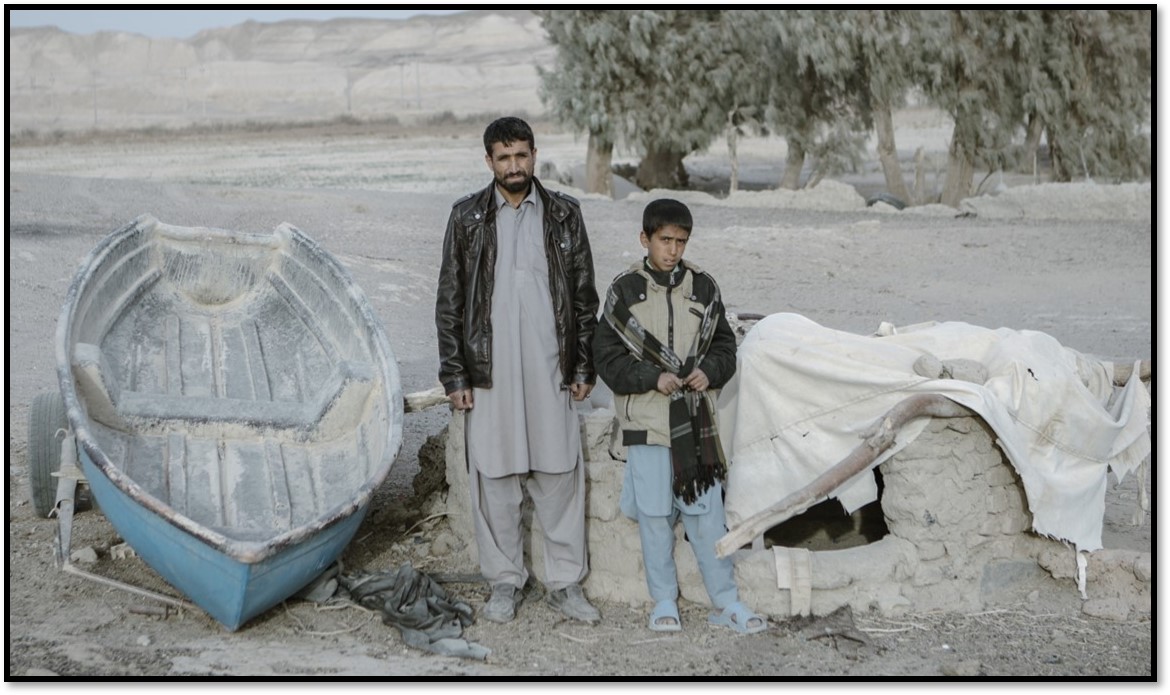In May 2023, clashes erupted between Iran and Afghanistan after President Ebrahim Raisi charged that the Taliban government was restricting access to water from the Helmand River. The 621-mile-long river flows across Afghanistan and empties into lakes and wetlands in southeastern Iran used by hundreds of thousands of people. More than 90 percent of Iran’s 85 million people faced drought conditions in 2022 and 2023, according to the Iran Meteorological Organization. “I warn the rulers of Afghanistan to immediately give the people of Sistan-Baluchistan their water rights,” the president said on May 18, 2023 during a visit to drought-stricken areas in southeast Iran near the Afghan border.” We will not allow the rights of our people to be violated.” At least three border guards—two Iranians and one Taliban fighter—were killed during the fighting.
The tensions coincided with a diplomatic standoff. On May 25, Foreign Minister Hossein Amir-Abdollahian said that the Islamic Republic of Iran still did not recognize Taliban rule in the Islamic Emirate of Afghanistan. “We will not recognize the current rulers of Afghanistan and insist on the need to establish an inclusive government.” He said the Taliban was “part of the reality” of the country but not all of the nation, which has diverse sectarian and ethnic constituencies. The Taliban is largely Sunni and ethnic Pashtun, while 10 percent to 15 percent of the population is Shiite and more than half of the 40 million Afghans are not Pashtun, according to rough estimates (Afghanistan's last census was conducted in 1979 and was incomplete).

The Taliban’s Ministry of National Defense called for new diplomacy to resolve a dispute over natural resources that dates back centuries. “Making excuses for war and negative actions is not in the interest of any of the parties.” Hafiz Zia Ahmad, a deputy Foreign Ministry spokesman, said, “We don’t want relations with our neighboring countries to deteriorate.”
For decades, access to water resources has been a point of contention between Iran and Afghanistan. The Helmand River, which flows from the mountains of the Hindu Kush through Afghanistan into southeastern Iran, is basic source of water for both countries. It has been critical to agriculture, fishing and human consumption for millions of people on both sides of the border.
The dispute dates back to the 1940s and 1950s, when Afghanistan built two dams on the Helmand River —the Kajaki and the Grishk—that curtailed the water flow into Iran. In 1973, the two countries signed a treaty on sharing water resources. It which focused heavily on distribution of water, but the accord was neither ratified nor implemented. In February 2021, Iran and Afghanistan signed an agreement based on the 1973 treaty, but disputes over dams remained unresolved over the next two years.
Both nations have faced periodic droughts, which sparked earlier tensions. Since 1945, sequential Afghan governments—including the monarchy until 1979, the Soviet-backed government in the 1980s, the Taliban in the 1990s, the U.S.-backed democratic government from 2004 to 2021, and the Taliban again after 2021--have built, repaired or upgraded dams on the Helmand, including the Kamal Khan dam that curtailed the flow of water to Iran. The Taliban closed the sluices of the Kajaki Dam to cut off water to Iran from during a drought from 1998 to 2001 that affected the common border area. When the dam was completed in March 2021, Afghan President Ashraf Ghani said that Afghanistan would stop allowing extra water to flow to Iran for free and would instead trade water for oil.
Iranian officials have blamed the Helmand River's declining water flow on Afghanistan’s dam projects, although droughts have also played a key role. Since the early 2000s, parts of the Helmand River in Iran have been dry for up to 10 months of the year. “We cannot remain indifferent to what is damaging our environment,” President Hassan Rouhani said in 2017. “The construction of several dams in Afghanistan – the Kajaki, Kamal Khan and Selma dams and other dams in the north and south of Afghanistan – impacts our Khorasan and Sistan and Baluchistan provinces.”
The dams have further imperiled the Hamoun wetlands, which span Iran and Afghanistan. About two-thirds of the wetlands, which include three lakes, are within Iran and, for thousands of years, provided local communities with water. In 2000, the Hamoun wetlands, which covered 2,185 square miles, were the world’s seventh largest wetland. But by 2004, they had largely dried up due to drought and inefficient use of water. The wetlands still constitute Iran’s third-largest lake.

The dry soil has contributed to a cycle of dust storms. Occasional rainfall or floods temporarily revitalize parts of the wetlands but not enough to reverse the decades of damage. Dry soil also leaves Sistan and Baluchistan vulnerable to flash floods. In January 2020, three days of heavy rain – the equivalent of a year’s worth – displaced thousands, killed at least three and destroyed crops, homes and infrastructure. The floods did at least $53 million in damage, with limited government relief to compensate.
Restoring the wetlands would require several billion cubic meters of water to be redirected to the Hamoun wetlands, a former government official estimated. In April 2020, the European Union and the U.N. Development Program pledged $11.7 million to help rehabilitate the vulnerable ecosystem.
